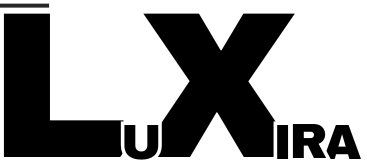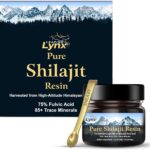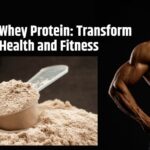How mChanging Your Body Without the Gym — A Science-Backed Guide
Introduction
Studies have proven that you do not need fancy gym equipment to develop an attractive physique. You can make excellent progress with the right bodyweight training program at home, research shows. This guide will show you how you can pack on the pounds and become a natural in your own living room based on 100 percent science-backed techniques.
Whether you’re unable to access a gym, prefer the convenience of home workouts, or are looking to supplement your training, this guide is designed to help you understand the science of muscle growth and implement effective strategies to transform your body using minimal or no equipment.
Key Takeaway
That’s right, you can build muscle from home. The simple secret is knowing how muscles get bigger and applying the right principles over time.
Table of Contents
The Physiology of Muscle Hypertrophy
Muscle growth (a.k.a. hypertrophy) happens because muscle protein synthesis must exceed muscle protein breakdown, yielding a positive net protein balance in the long run. This process, often thought to be associated solely with lifting heavy weights, is actually initiated via three key mechanisms:
- Mechanical Tension: The force produced when muscles contract against resistance
- Metabolic Stress: The accumulation of metabolites during exercise
- Muscle Damage: Microscopic tears in muscle fibers that lead to repair and growth

Scientific illustration of the muscle hypertrophy process
Research published in the Journal of Strength and Conditioning Research has shown that resistance training with bodyweight can effectively stimulate these mechanisms when performed correctly. The key is ensuring sufficient intensity to challenge your muscles.
Can You Really Build Muscle With Just Bodyweight Exercises?
Systematic illustration of the process of muscle hypertrophy
Research reported in the Journal of Strength and Conditioning Research suggests that, when done correctly, resistance training with only bodyweight can also effectively stimulate these mechanisms. The key is to make sure you are intense enough to challenge your muscles.
Why You Can Build Muscle With Bodyweight Exercises
Absolutely. Multiple studies have shown that as long as you follow two key rules, you can achieve just as much muscle growth with bodyweight than traditional weights workouts:
- Training to near failure: Pushing each set until you have only 1-2 reps left in reserve
- Progressive overload: Continuously increasing the demand on your muscles over time
Scientific Evidence:

For example, one 2018 study published in the Journal of Strength and Conditioning Research found little difference in hypertrophy between participants who trained to failure with light loads (30-40% of 1RM) and those who trained to failure with heavy loads (70-80% of 1RM) over an 8-week training period (Nakamura et al., 2018). This indicates that the intensity of effort, not simply the load used, is an important consideration when it comes to muscle growth.
Key Principles for Building Muscle at Home
1. Progressive Overload
The principle of progressive overload states that to continue building muscle, you must gradually increase the stress placed on your body during exercise. With bodyweight training, you can achieve this by:
- Increasing repetitions
- Decreasing rest periods between sets
- Increasing time under tension (slower movements)
- Progressing to more difficult exercise variations
- Adding weighted objects (backpack with books, water bottles)
2. Training Volume and Frequency

Research indicates that each muscle group should be trained with approximately 10-20 sets per week for optimal growth. For home workouts, this can be achieved with:
- 3-4 full-body workouts per week
- 2-3 sets per exercise
- 8-30 repetitions per set (depending on exercise difficulty)
3. Adequate Protein Intake
Muscle protein synthesis requires sufficient protein consumption. Current research recommends:
- 1.6-2.2g of protein per kg of body weight daily
- Protein distributed evenly throughout the day (20-40g per meal)
- Consumption of high-quality protein sources
4. Proper Recovery
Muscle growth occurs during recovery periods, not during the workout itself. Essential recovery components include:
- 7-9 hours of quality sleep per night
- At least 48 hours of rest between training the same muscle group
- Proper hydration and nutrition
- Stress management
Pro Tip
Track your workouts meticulously. Record reps, sets, and exercise variations to ensure you’re consistently progressing and not just maintaining.
Effective Bodyweight Exercises for Each Muscle Group
Chest
- Push-ups (standard, diamond, decline, incline)
- Pseudo planche push-ups
- Dips (between chairs or counters)
Push-ups activate 95% of the pectoralis major, comparable to bench pressing
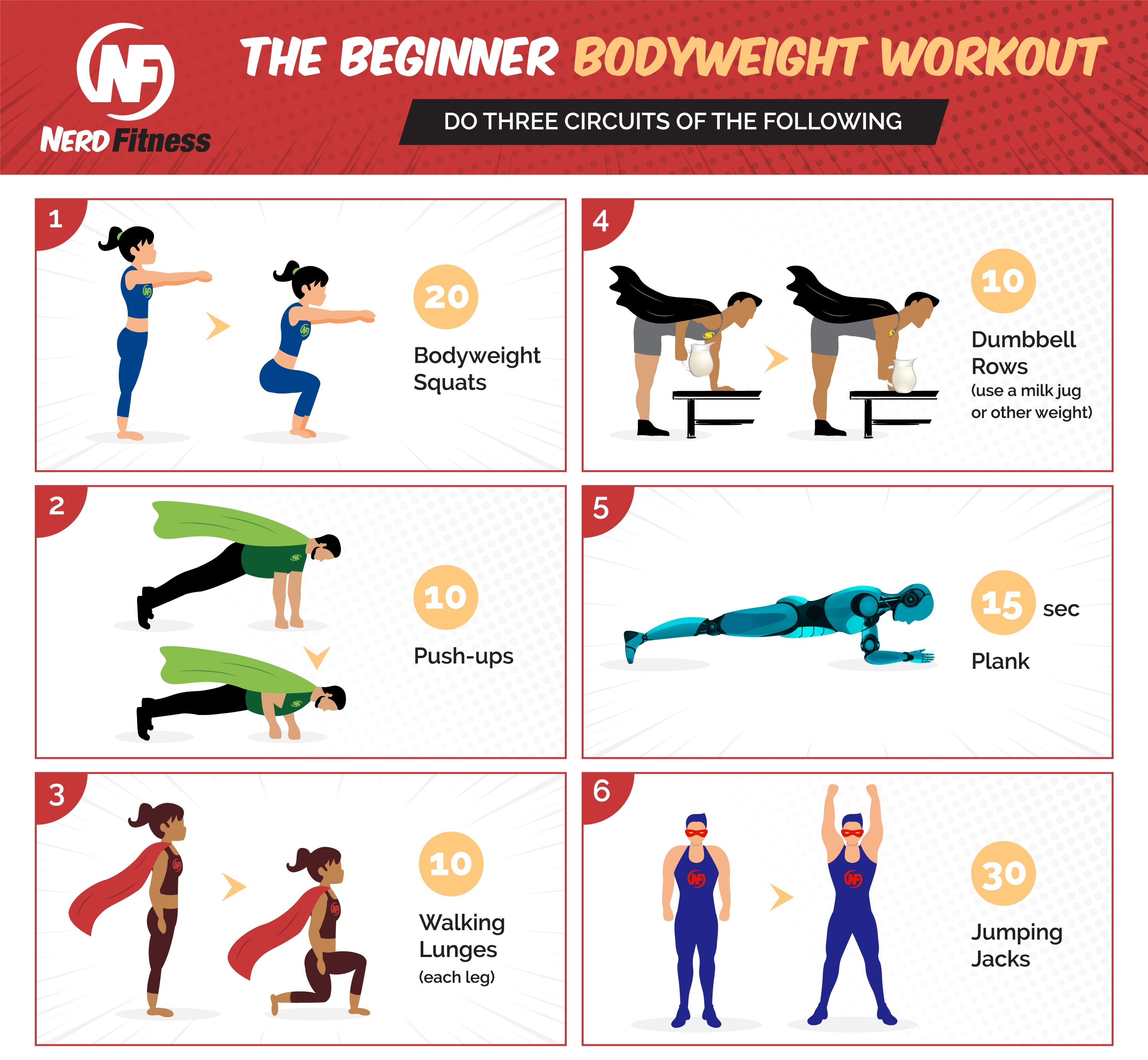
Back
- Inverted rows (using a table or bed sheet)
- Superman holds
- Bodyweight rows
- Pull-ups/Chin-ups (if you have a bar)
Inverted rows effectively target the entire back complex

Legs
- Bodyweight squats
- Bulgarian split squats
- Lunges (forward, reverse, lateral)
- Pistol squats (assisted if needed)
- Sliding hamstring curls
Single-leg variations create sufficient tension for growth

Shoulders
- Pike push-ups
- Handstand wall push-ups (advanced)
- Lateral raises with water bottles/books
- Reverse snow angels
Pike push-ups mimic the overhead press movement pattern

Arms
- Diamond push-ups (triceps)
- Tricep dips
- Bodyweight tricep extensions
- Chin-ups (biceps emphasis)
- Isometric bicep holds with towels
Diamond push-ups activate triceps 2.5x more than standard push-ups

Core
- Planks (front, side)
- Mountain climbers
- Hollow body holds
- Russian twists
- L-sits
Compound exercises like pike push-ups also engage the core significantly

Exercise Science:
When selecting bodyweight exercises, focus on those that allow you to reach muscular fatigue within 30-40 repetitions. If you can easily perform more reps, the exercise is too easy to stimulate significant muscle growth. Progress to harder variations as you get stronger.
Scientifically-Optimized Workout Plan
Below is a 3-day full-body workout routine designed based on scientific principles of muscle hypertrophy. Each workout should take approximately 45-60 minutes to complete.
| Workout A | Sets | Reps | Rest |
|---|---|---|---|
| Push-up Variation | 3-4 | 8-20 | 90 sec |
| Inverted Row | 3-4 | 8-15 | 90 sec |
| Bulgarian Split Squat | 3 | 8-15 per leg | 90 sec |
| Pike Push-up | 3 | 8-15 | 90 sec |
| Plank | 3 | 30-60 sec | 60 sec |
| Workout B | Sets | Reps | Rest |
|---|---|---|---|
| Bodyweight Squat/Pistol Squat | 3-4 | 15-30 | 90 sec |
| Diamond Push-up | 3-4 | 8-20 | 90 sec |
| Sliding Hamstring Curl | 3 | 8-15 | 90 sec |
| Bodyweight Tricep Extension | 3 | 8-15 | 90 sec |
| Mountain Climbers | 3 | 30-60 sec | 60 sec |
| Workout C | Sets | Reps | Rest |
|---|---|---|---|
| Decline Push-up | 3-4 | 8-20 | 90 sec |
| Sliding Lat Pulldown | 3-4 | 8-15 | 90 sec |
| Lunges | 3 | 10-15 per leg | 90 sec |
| Bicep Bed Sheet Curls | 3 | 10-20 | 90 sec |
| Russian Twists | 3 | 15-20 per side | 60 sec |
Schedule Recommendation
Perform these workouts 3-4 times per week with at least one rest day between similar workouts. A sample schedule might look like:
- Monday: Workout A
- Tuesday: Rest or Light Cardio
- Wednesday: Workout B
- Thursday: Rest or Light Cardio
- Friday: Workout C
- Saturday: Rest
- Sunday: Rest or repeat Workout A
Application Tip
Always exercise with good form. Doing fewer reps right is better than doing more wrong. Record yourself now and again to check your form, or use a mirror whenever you can.
Nutrition for Natural Muscle Growth
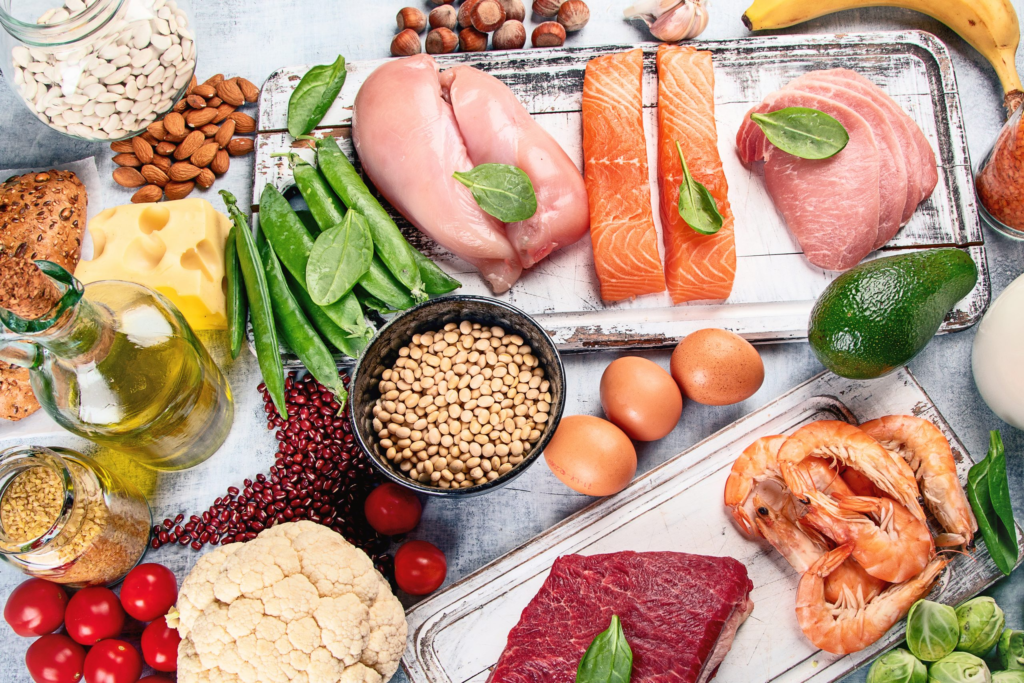
Proper nutrition is just as important as your workout routine when it comes to building muscle naturally. Research has established several key nutritional principles for maximizing muscle growth:
Protein Requirements
Higher protein intakes of between 1.6-2.2g of protein per kg of bodyweight per day have been shown to be optimal for muscle growth. Thus for a 75kg (165lb) person, somewhere in the region of 120-165g protein daily.
Protein sources good for muscle growth
Top Protein Sources
Chicken Breast
31g protein per 100g
Greek Yogurt
10g protein per 100g
Eggs

6g protein per egg
Tofu
8g protein per 100g
Lentils
9g protein per 100g
Salmon
25g protein per 100g

Caloric Intake
To build muscle, you need to be in a slight caloric surplus—consuming more calories than you burn. Research suggests:
- Maintenance calories + 200-300 calories for lean muscle gains
- Prioritize whole foods over processed options
- Spread caloric intake across 3-5 meals throughout the day
Carbohydrates and Fats
Both macronutrients play crucial roles in muscle building:
- Carbohydrates: 3-5g per kg of bodyweight daily to fuel workouts and recovery
- Healthy Fats: 0.5-1g per kg of bodyweight daily to support hormone production
Scientific Evidence:
A 2019 meta-analysis in the Journal of the International Society of Sports Nutrition showed that protein distribution throughout the day is as important as total intake. In fact, taking in 20-40g of high quality protein every 3-4 hours was shown to optimize rates of muscle protein synthesis compared to consuming the same amount of protein spread out over fewer, larger meals.
Hydration
Proper hydration is essential for muscle function and recovery:
- Aim for 3-4 liters of water daily
- Increase intake on training days
- Monitor urine color (pale yellow indicates good hydration)
Recovery Strategies for Optimal Results

Recovery is when muscle growth actually occurs. Optimize your recovery with these scientifically-backed strategies:
Sleep Quality and Quantity
Research shows that inadequate sleep can decrease testosterone levels, increase cortisol, and impair muscle recovery. Prioritize:
- 7-9 hours of uninterrupted sleep nightly
- Consistent sleep/wake schedule
- Sleep-promoting environment (dark, cool, quiet)
Active Recovery
Light activity on rest days can enhance recovery by increasing blood flow to muscles:
- Walking
- Swimming
- Yoga
- Light cycling
Stress Management
Chronic stress increases cortisol production, which can interfere with muscle development and recovery. Implement:
- Meditation or mindfulness practices
- Deep breathing exercises
- Time in nature
- Hobbies and social connection
Recovery Tip
Get in the habit of checking your recovery status before every workout. And again, if you feel extremely tired or demonstrate decreased performance, a day off or lighter workout might be helpful to avoid overtraining.
Monitoring Progress and Adaptings

Documenting your progress helps you to make necessary changes to both your training and nutrition. Some effective tracking methods are:
Performance Metrics
- Number of repetitions performed
- Exercise progression variants used
- Rest times between sets
- Total volume (sets × reps)
Body Composition
- Weekly weight measurements (same time, same conditions)
- Monthly body measurements (chest, waist, hips, arms, thighs)
- Progress photos (every 4-8 weeks)
When to Make Adjustments
Consider modifying your approach if:
- Progress plateaus for 2-3 weeks
- You can easily exceed the target rep ranges
- Recovery becomes compromised
- You’re gaining excess body fat
Adjustment Strategies
- Progress to more difficult exercise variations
- Increase training volume (additional sets)
- Adjust nutrition (increase protein or overall calories)
- Implement periodization (varying intensity across weeks)
- Add resistance with household items or invest in minimal equipment
Common Myths and Misconceptions

Myth: You need heavy weights to build significant muscle
FACT: Research has shown that training to near failure with lighter loads (even bodyweight) can produce similar hypertrophy as heavy weight training when volume is equated.
Myth: You need to eat every 2-3 hours
FACT: Total daily protein and caloric intake matters more than meal timing for muscle growth. 3-5 well-balanced meals throughout the day is sufficient.
Myth: Muscle turns to fat when you stop training
FACT: Muscle and fat are completely different tissues. When you stop training, muscles may atrophy (shrink) while simultaneously gaining fat due to continued caloric surplus.
Myth: Women will get “bulky” from strength training
FACT: Women typically have 1/15th to 1/20th the testosterone levels of men, making significant muscle “bulk” extremely difficult without specific training, nutrition, and sometimes external assistance.
Myth: Protein should be consumed immediately after training
FACT: The “anabolic window” is much wider than previously thought. Total daily protein intake is more important than precise timing, though having protein within a few hours of training is beneficial.
Myth: More protein is always better
FACT: Research indicates diminishing returns beyond 1.6-2.2g/kg of bodyweight per day. Excess protein is either used for energy or excreted.
Conclusion: Your Path to Natural Muscle Growth

Building muscle naturally at home is not only possible but can be highly effective with the right approach. The scientific principles that govern muscle growth apply whether you’re in a fully-equipped gym or your living room.
Remember these key takeaways:
- Train to near failure to maximize muscle fiber recruitment
- Apply progressive overload by advancing exercise difficulty over time
- Consume adequate protein (1.6-2.2g per kg of bodyweight)
- Prioritize recovery as much as your workouts
- Track progress and make evidence-based adjustments
Consistency is the ultimate key to success. A science-based approach performed regularly will yield far better results than an optimal program followed sporadically. Start with the program outlined in this guide, monitor your results, and adjust as needed based on your progress and individual response.
Final Thought
’The best workout is the one you will actually do consistently. At-home workouts eliminate many of the obstacles to exercising and allow for consistency to be achieved more easily for most. Your muscles can’t tell the difference between some fancy gymnasium and your living room — they are only reactive to the stress you put on them. “With the right technique, the right progression and the right nutrition you can build an impressive physique anywhere.”
For more Blogs visit: http://luxira.in
For home gym equipment visit: https://www.amazon.in/s?k=home+gym+equipment&crid=1P0F9YY98X73D&sprefix=home+gym+equipment%2Caps%2C303&ref=nb_sb_noss_1
